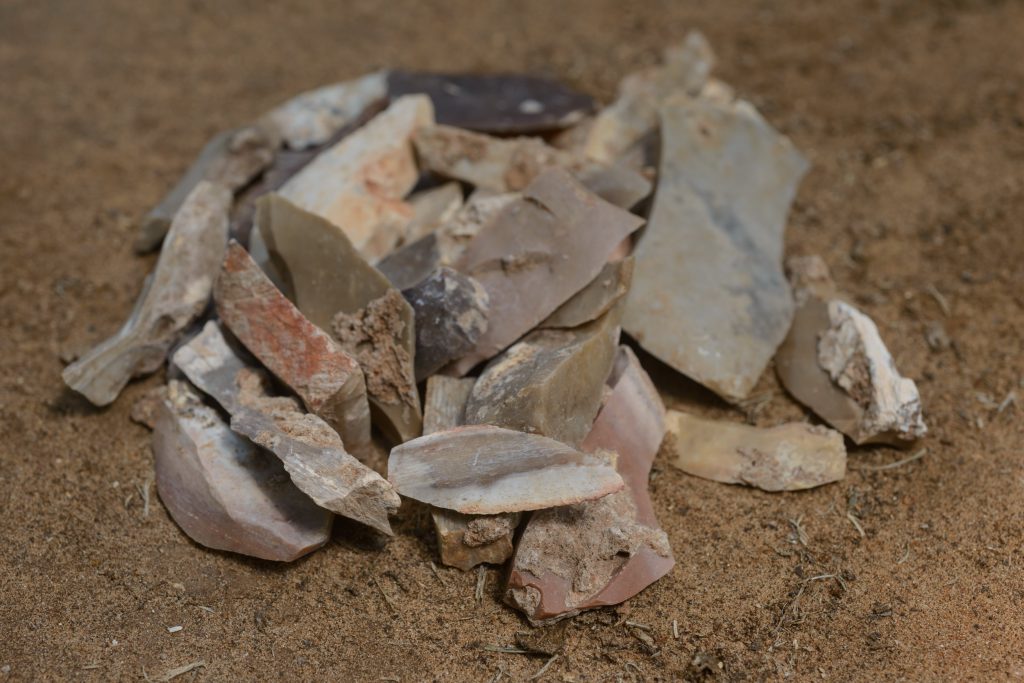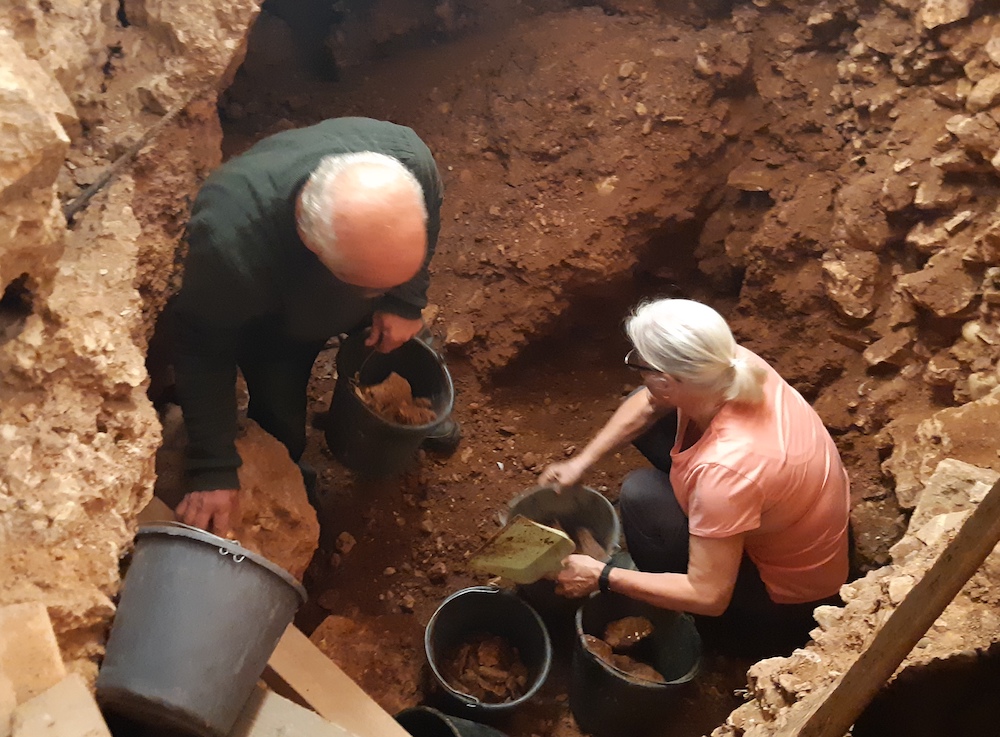Ancient Humans Used Fire to Make Stone Tools

Humanity’s creation and mastery of fire likely came in stages. Being able to reliably kindle this source of light and heat was only one step, managing the flames was another. It was a crucial turning point in human evolution when Homo sapiens—or one of our species’ hominin relatives—first controlled fire not only as a safeguard from predators, but also for sculpting tools from stone.
Now scientists believe they have found evidence of this level of mastery. In an analysis published in Nature Human Behaviour, researchers at the Weizmann Institute of Science and the Sonia and Marco Nadler Institute of Archaeology, both in Israel, make the case that more than 300,000 years ago, hominins living in Qesem Cave, a small cavern in what is today Israel, succeeded in controlling fire to enhance the production of tools.
The study suggests that the cave’s inhabitants—which hominin resided there remains unknown—used and controlled fire in one way to produce simple stone tools called flakes and another to produce blades. More specifically, these instruments were heat-treated, meaning the flint was heated to improve the craftsperson’s ability to carefully knap (or shape) the tools. The researchers demonstrated that these tools must be heated to different temperatures.
Considering that a typical fireplace reaches 600 degrees Celsius easily, maintaining heat around the median temperature of 259 degrees Celsius to create blades, for example, was a technological challenge for the Qesem hominins. “If they wanted to produce blades, they would have to think in advance about which protocol to use,” says Filipe Natalio, an archaeologist at the Kimmel Centre for Archaeological Science in the Weizmann Institute of Science, and one of the authors on the new study.
The team combined traditional excavation work with novel techniques from artificial intelligence research to arrive at the study’s conclusions. “Nobody has used artificial intelligence as a thermometer for reading out information from stone tools,” Natalio says.
He adds that the approach is itself a breakthrough, “We can now go out there and start exploring other archaeological sites, and infer new information about human behavior and their relation to fire.”
Qesem Cave is an important site in what scholars call the Levant region, an area along the eastern Mediterranean that scientists believe was crucial in early human migrations out of Africa. When Natalio and his colleagues first visited the site, they simply wanted to assess whether the hominins who had inhabited Qesem Cave had used fire.
Earlier research had shown that hominins used fire at other, older sites. For example, Wonderwerk Cave in South Africa shows evidence that hominins burned bone and plants 1 million years ago, and the Gesher Benot Ya’aqov site in the Levant hints that humans charred seeds, wood, and flint 790,000 years ago.
“Nobody has used artificial intelligence as a thermometer for reading out information from stone tools,” says archaeologist Filipe Natalio.
At Qesem Cave, Natalio and his colleagues looked for objects with heat-induced defects on their surfaces. In two years of work on the site, the researchers found and examined two types of flint tools—flakes and blades—that showed evidence of fire exposure. They also collected flint shards that researchers refer to as pot-lids. They then used a technique known as Raman spectroscopy, which offers scientists insight into the chemical molecules present on an artifact.
In addition, the researchers used a technique from artificial intelligence called machine learning, in which a computer is trained to seek out patterns based on provided data. For this step, the team collected raw materials from different sources, heated them in the oven under controlled conditions at defined temperatures, and then conducted Raman spectroscopy on these objects.
By training their computer with this information, they could use machine learning to estimate the temperatures involved in crafting the artifacts found in Qesem Cave. In this way, Natalio and his colleagues concluded that blades were heated to a lower median temperature (259 degrees Celsius) than flakes (413 degrees Celsius). The pot-lids were exposed to an even higher median temperature (447 degrees Celsius).
Andrew Sorensen, an archaeologist at Leiden University in the Netherlands, who was not part of the research team, describes the machine learning approach as “a very promising nondestructive method for identifying heated stone artifacts in archaeological assemblages.”
The techniques need to be further refined—by Natalio’s own admission, the approach is less accurate when assessing objects heated at lower temperatures. Still, Kira Westaway, a geochronologist and quaternary scientist at Macquarie University in Australia, who did not participate in the research, notes that the work is “innovative … a large step forward for the analysis of heated flint.”
Westaway explains that the control of fire to create flint blades at Qesem Cave represented a major human advance. Flint is a well-known raw material in stone tool production, and scholars think heating it produced a better-quality tool for tasks such as butchering game.
However, Sorensen notes that the paper fell short of providing convincing evidence that the hominins inhabiting Qesem Cave around 300,000 years ago were systematically heat-treating their flint to improve its quality—even if they were cognitively capable of doing so.
In other words, it’s still unclear whether the finds are evidence of true mastery—or simply a lucky spark in the dark.
Correction: October 20, 2020
The terms “forge” and “flames” were replaced in some instances to help clarify that the flint tools were heat-treated. Additionally, a sentence was added to further explain how heat-treatment contributes to tool production.
































